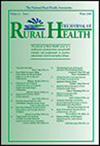Association between obesogenic environments and childhood overweight/obesity across the United States: Differences by rurality
Abstract
Purpose
Childhood obesity is more prevalent in rural compared to urban communities and may be related to urban-rural differences in environmental factors known to affect obesity. However, understanding of how environmental factors impact childhood obesity in rural settings remains limited. This study aimed to address this gap by exploring the relationship between obesogenic environments and childhood overweight/obesity rates, including variations across the urban-rural continuum.
Methods
This study analyzed data for counties in the United States (N = 3140). Linear regression models were employed to examine the relationship between the Childhood Obesogenic Environment Index, which consisted of ten variables from a variety of sources associated with physical activity and healthy eating, and childhood overweight/obesity rates estimates derived from the 2016 National Survey of Children's Health. County rurality was categorized using Rural-Urban Continuum Codes and a moderation analysis was conducted to identify potential variations by rurality.
Findings
There was a significant positive association between the COEI and childhood overweight/obesity rates nationally, with notable variations across the urban-rural continuum for specific index components. Neighborhood walkability showed a significant positive association across rurality, indicating that childhood overweight/obesity rates were higher in less walkable communities. Full-service restaurants exhibited an inverse relationship with childhood overweight/obesity rates across all RUCC levels.
Conclusions
These results underscore the obesogenic environmental factors associated with childhood overweight/obesity rates nationally and how they vary across the urban-rural continuum. This study highlights the importance of considering these variations when designing interventions to address childhood obesity.

 求助内容:
求助内容: 应助结果提醒方式:
应助结果提醒方式:


